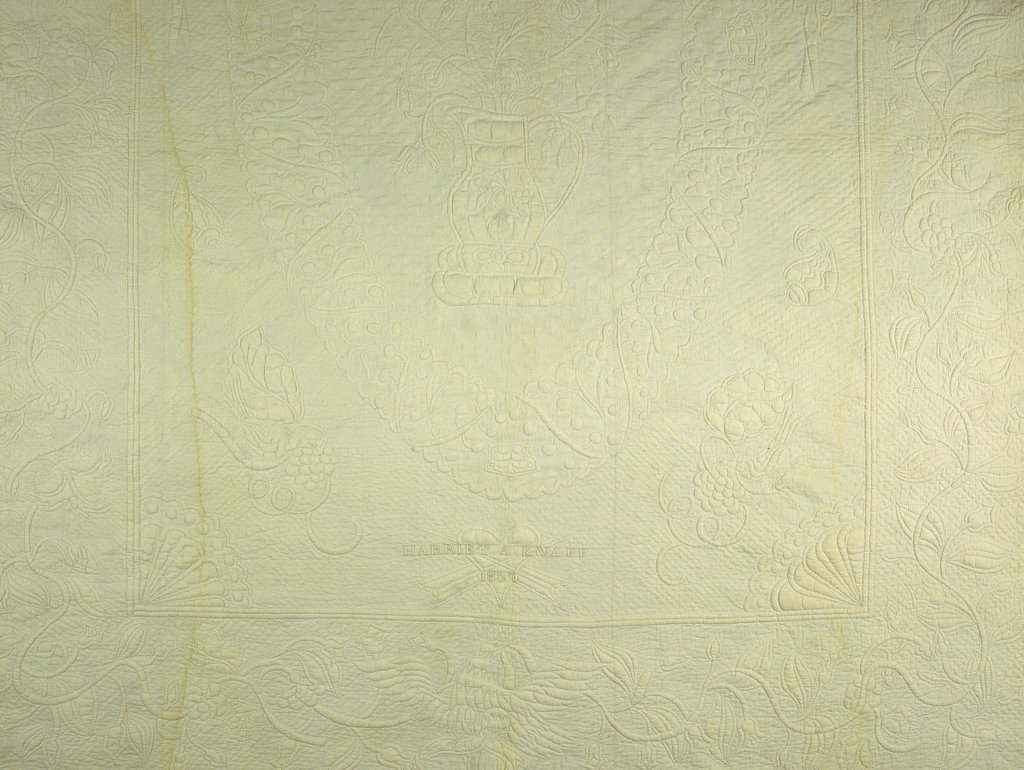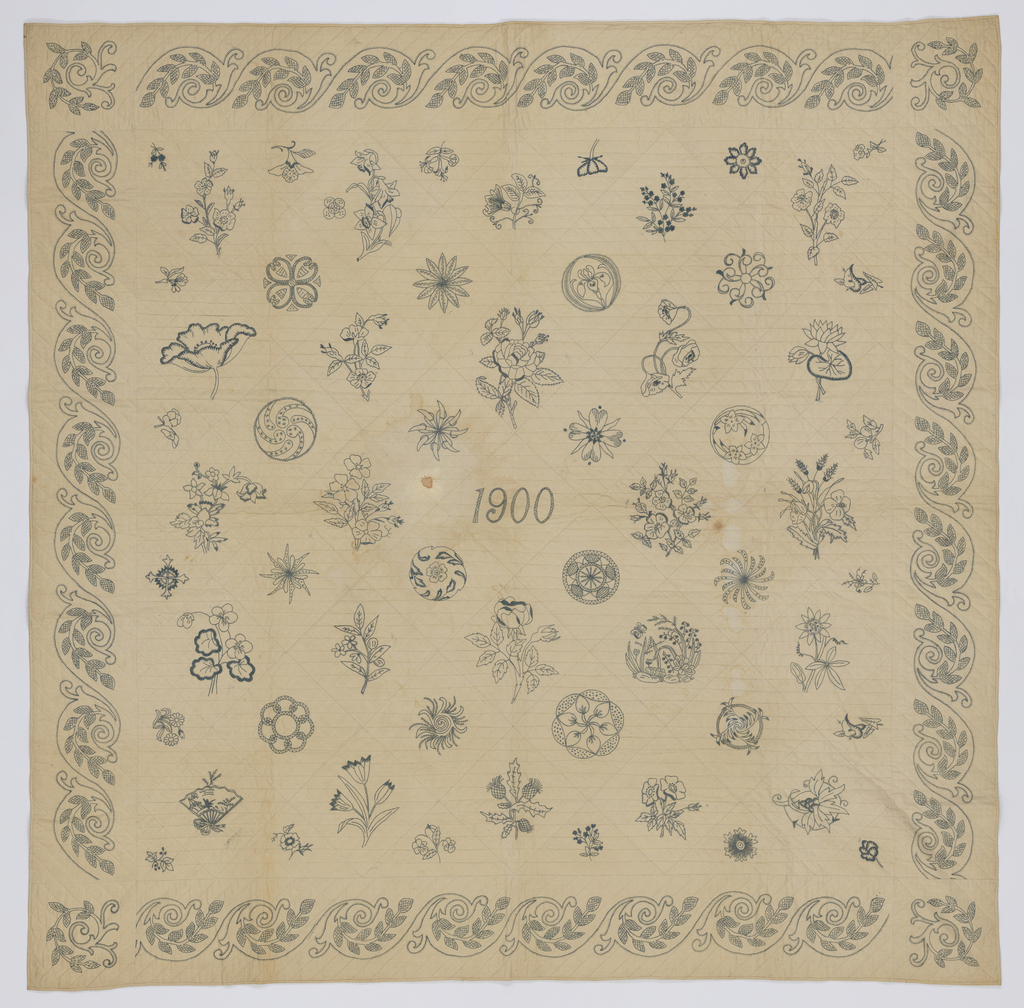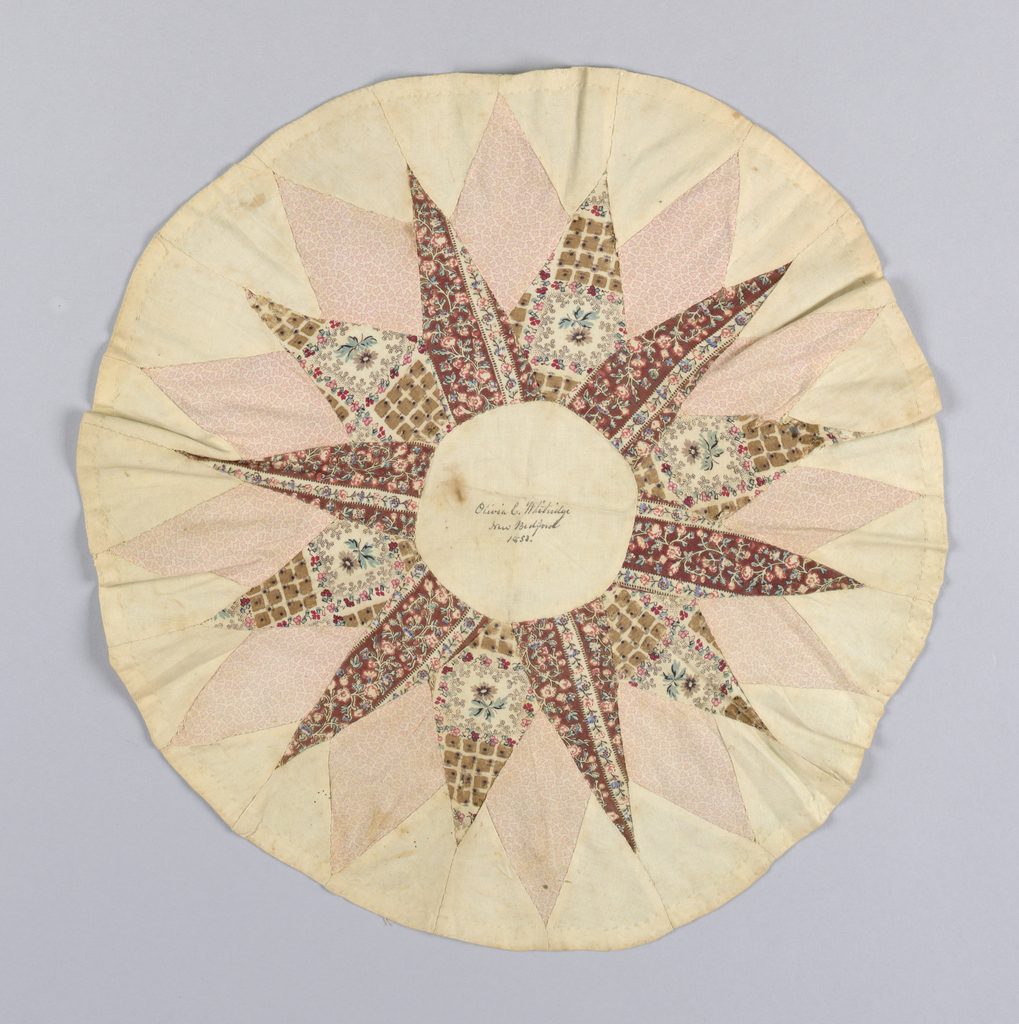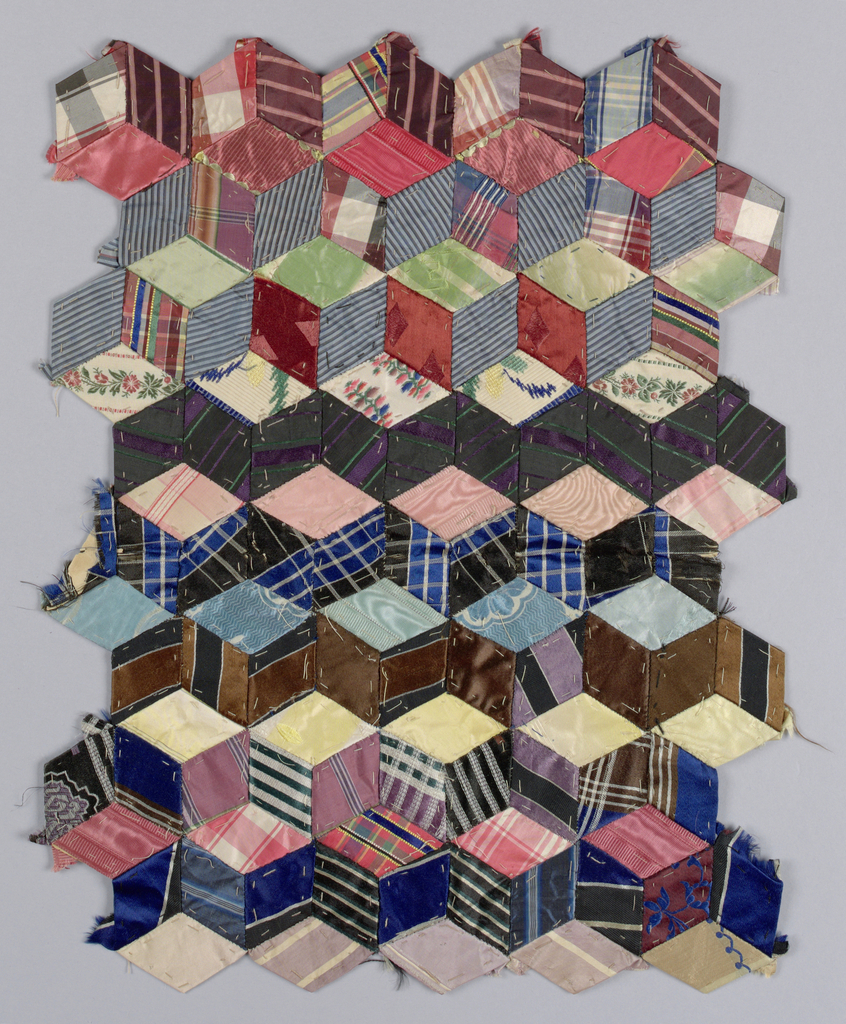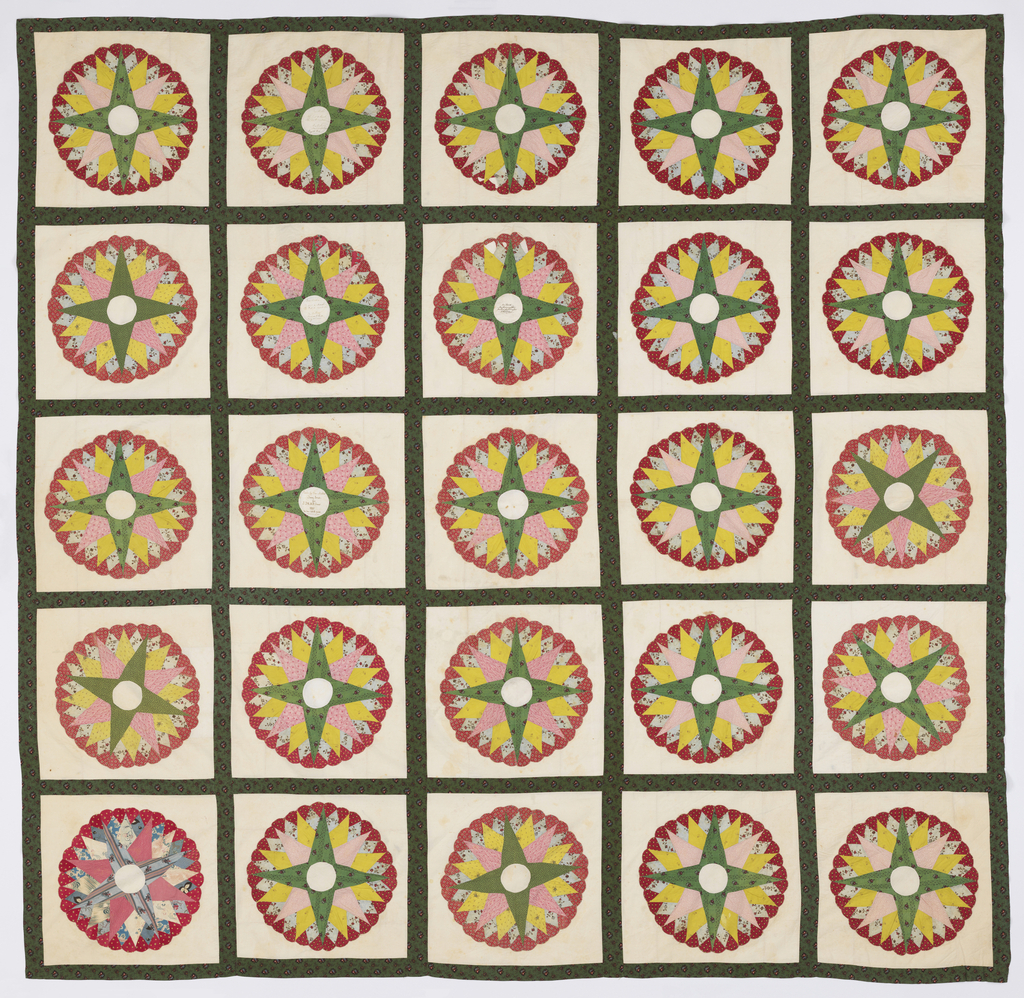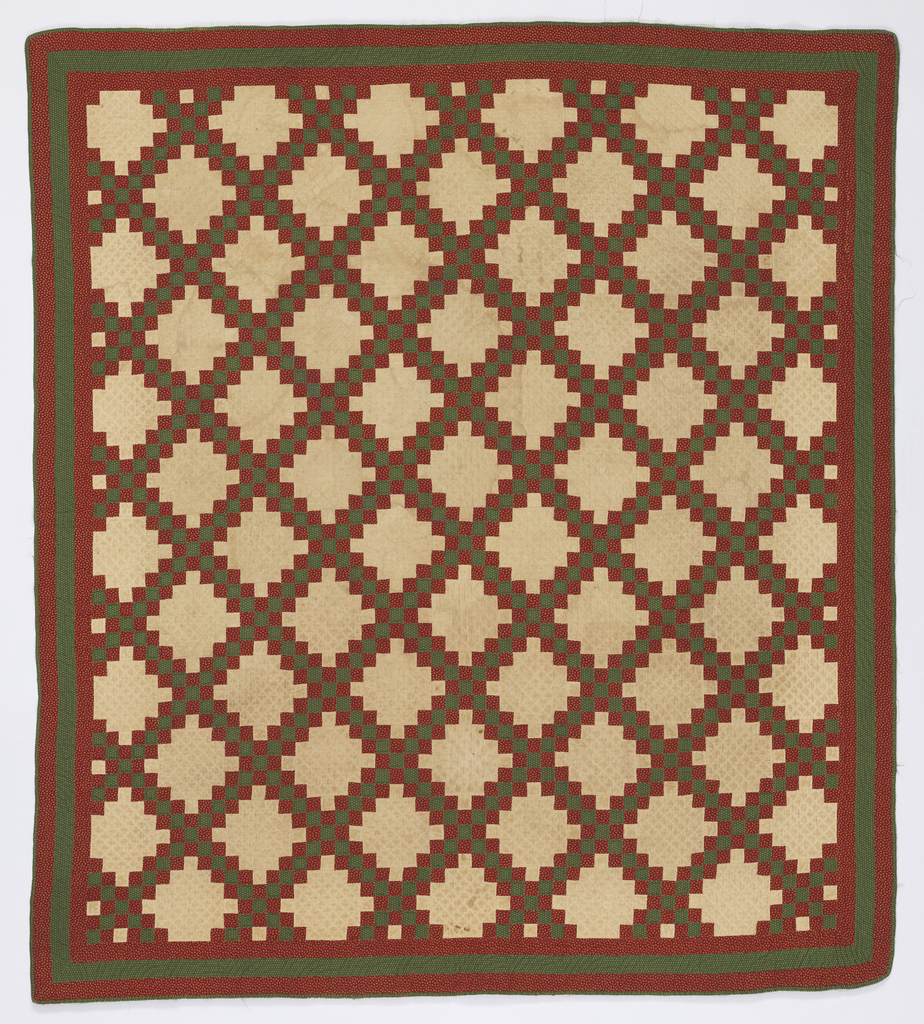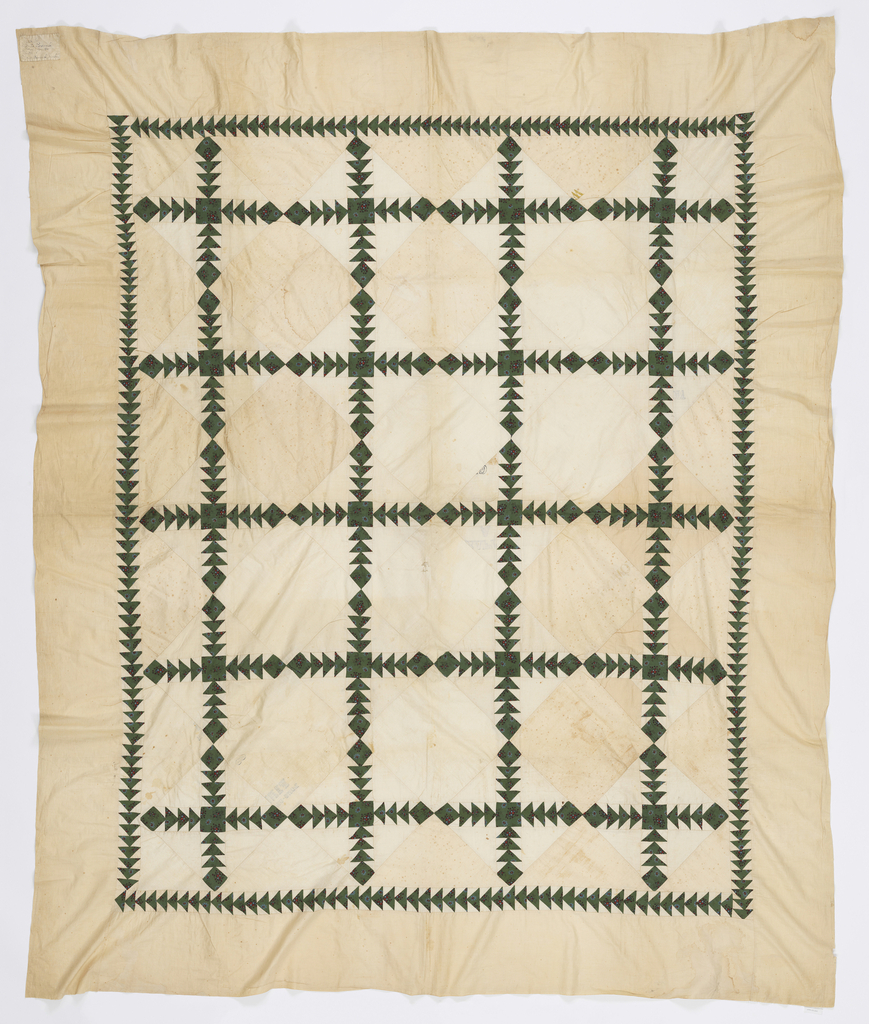Author: Laurel Horton In celebration of the fourth annual New York Textile Month, members of the Textile Society of America will author Object of the Day for the month of September. A non-profit professional organization of scholars, educators, and artists in the field of textiles, TSA provides an international forum for the exchange and dissemination...
Donated to Cooper Hewitt, Smithsonian Design Museum by New York-based textile dealer Elinor Merrell, this bedcover offers an opportunity to see how motifs employed in America were influenced by distant cultures. In the hands of a highly skilled needle-worker deft at using stem-stitch, satin-stitch, and button-hole stitch techniques, a rare coverlet was created. This block-style...
Olivia Cushing Whitridge (1783-1876) was born to a prominent New England family with ties to Massachusetts, Rhode Island and Maine. She married William Whitridge, and the couple lived in New Bedford, Massachusetts. It was in New Bedford, a whaling town, that Olivia C. Whitridge created this “Mariner’s Compass” patchwork medallion. The Mariner’s Compass pattern “was...
“Tumbling Blocks” is one of the most recognizable quilt patterns. As popular today as it was from the mid to late 1800s, it is a requisite pattern for any quilt collection. The roots of the pattern date back far longer than its use for American quilts. Tumbling Blocks has a long history in the grammar...
A very special family quilt in the Mariner’s Compass pattern was given to Cooper Hewitt, Smithsonian Design Museum by Susan Weitzman in 1972. Thanks to thoughtful, easy to read, handwritten inscriptions found on three of the twenty-five squares that make up the quilt, we know that Lacy Jones made the quilt in 1845, and that...
For centuries, quilt patterns and quilting techniques have been passed down from generation to generation and within generations, from sister-to-sister, cousin-to-cousin, or friend-to-friend. Without formal training, many quilters relied on their more experienced relatives to teach them the best methods. The museum is fortunate to have two quilts from the same family, the Reeds of...
Author: Jeffery McCullough One of the most challenging aspects of researching quilts is that, for many of them, there is no identifying information about the maker. Fortunately, this quilt top has a handwritten label stitched to it, which states “Made by Martha Brownlee born 1 Nov. 1801 Mother of Mary Brownlee Meloy.” Martha Brownlee was...
Author: Jeffery McCullough Many surviving nineteenth-century crib quilts are evidence that it was more common to make a child-size quilt in colors and patterns that were popular for adult-size bed quilts, rather than in specific “baby” colors. An 1840-1860 crib quilt in the collection of Cooper Hewitt, Smithsonian Design Museum represents common coloration and a...
The evening of May 19th capped off a three-day residency at the Cooper-Hewitt for Natalie Chanin, founder and designer of the design studio Alabama Chanin. Chanin, one of the founders of the burgeoning “slow fashion” movement, followed up her two-day Design Directions workshop for teenagers with an hour-long public lecture and book signing. “Lecture”...
